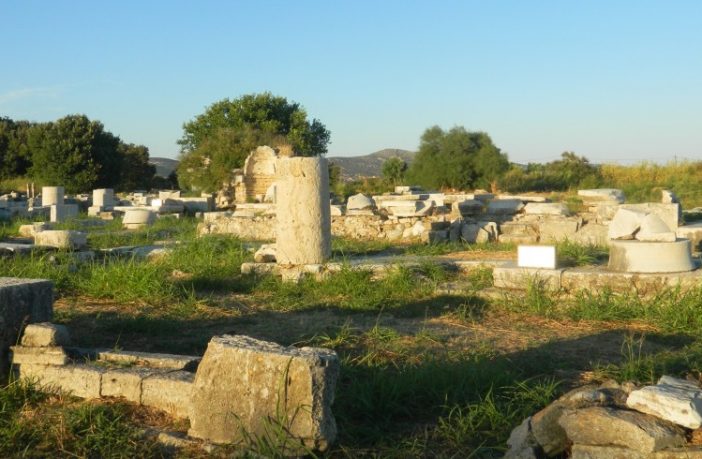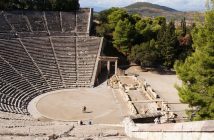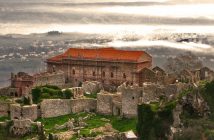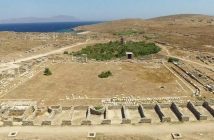Many civilizations have inhabited this small Aegean island, near Asia Minor, since the 3rd millennium B.C. The remains of Pythagoreion, an ancient fortified port with Greek and Roman monuments and a spectacular tunnel-aqueduct, as well as the Heraion, temple of the Samian Hera, can still be seen. Samos, due to its geographical location in the eastern Aegean, securing easy communications with the coast of Asia Minor, was one of the most important centres of political and cultural developments from the prehistoric era (5th/4th millennium BC) until almost the Middle Ages. The site is an area on the north-east coast of the island that is clearly defined by the surrounding mountains. It consists of the fortified ancient city (Pythagoreion) and the ancient Temple of Hera (Heraion), which is situated about 6 km away from the city and indissolubly linked with it.
Pythagoreion and Heraion of Samos
The great Temple of Hera (Heraion) has its origins in the 8th century BC, when it was the first Greek temple to be one hundred feet in length (Hecatompedos). It is unknown if this temple was surrounded by a peristyle of columns; its 7th-century successor was also innovatory in that it was the first temple to have a double row of columns across the front. These were both surpassed by the temple begun around 570-560 BC by Rhoecus and Theodorus, who built a colossal structure measuring 52.5 m by 105 m, the earliest in the new Ionic order. It was supported by at least 100 columns, whose moulded bases were turned on a lathe designed by Theodorus. The works for the construction of a new temple, known as the Great Temple of the Goddess Hera, a colossal structure measuring 55.16 m by 108.63 m, and surrounded by a peristyle of 155 columns about 20 m high, were started during the reign of Polycrates (c. 535-522 BC).
Pythagorion and Heraion in Greece’s Samos (Sisam) Island were included in the World Heritage list by UNESCO in 1992.




